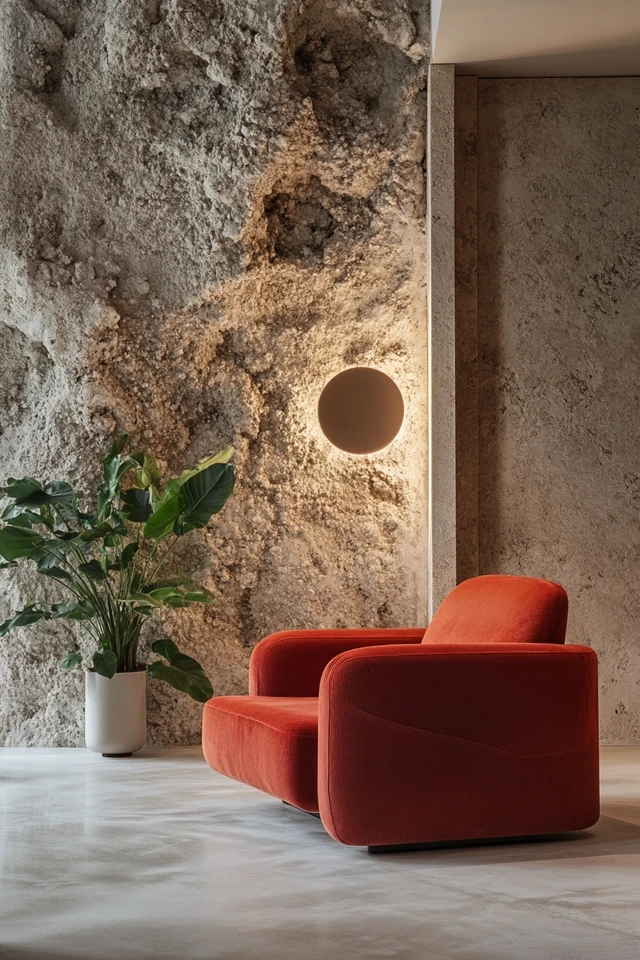Introduction
Interior design is as much about creativity as it is about functionality. One of the most exciting ways to make a statement in your home is by incorporating unexpected materials into your design. These unconventional choices—whether it’s textured concrete, reclaimed wood, or reflective metals—can completely transform a room, adding intrigue and character that traditional materials might lack.
I remember visiting a café that used repurposed shipping pallets as wall paneling. It was unexpected but incredibly stylish, with the rough wood adding warmth and depth to an otherwise modern space. That moment opened my eyes to the potential of using out-of-the-box materials in my own home. Not long after, I decided to experiment by adding a live-edge wood coffee table to my living room. It became the focal point of the room, sparking conversations and redefining the entire aesthetic.
The beauty of unexpected materials is how they can turn the ordinary into the extraordinary. Whether you’re designing on a budget or looking to make a high-end impact, these materials offer endless possibilities for creativity and personalization. In this guide, I’ll show you how to harness their potential to transform your space.
The Perfect Design for You
This design approach is perfect for anyone who wants to create a home that feels unique, bold, and memorable. Whether you love sleek modern interiors or rustic charm, unexpected materials can elevate your design. They’re especially ideal for spaces that feel too predictable or lack personality.
Picture a kitchen with countertops made of recycled glass that glimmer under the light or a bedroom with a statement wall clad in weathered metal sheets. These materials introduce texture, depth, and a sense of individuality to your space.
Incorporating unexpected materials isn’t just about aesthetics—it’s about telling a story. Each choice reflects your values, creativity, and lifestyle, turning your home into a space that’s truly your own.
Picture Gallery
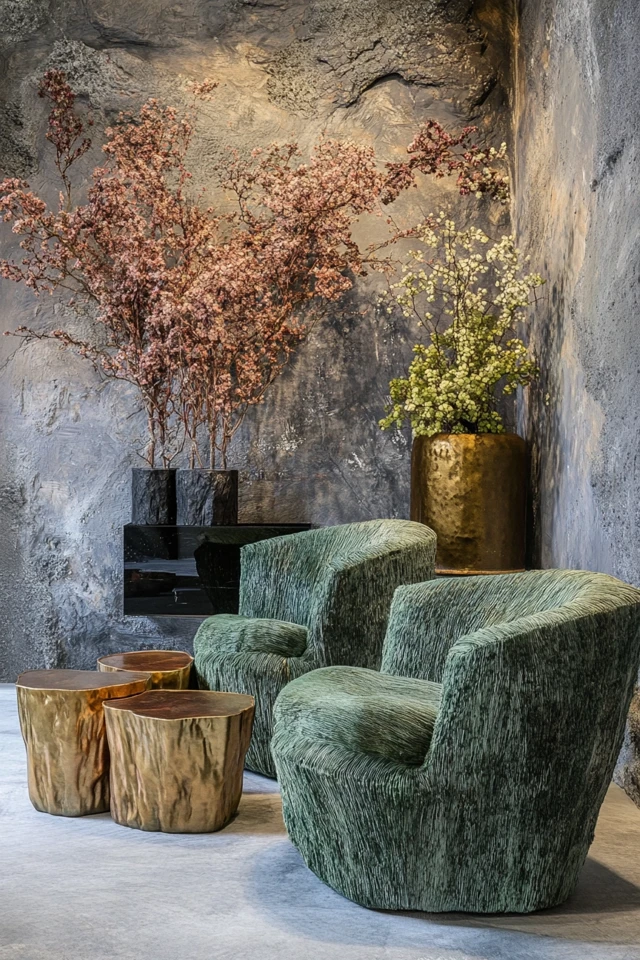
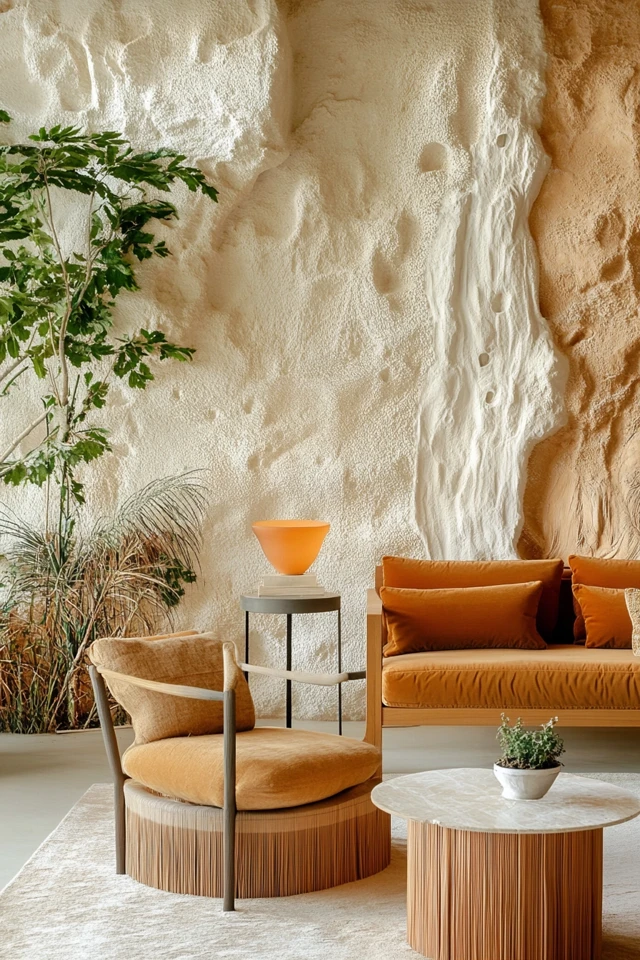
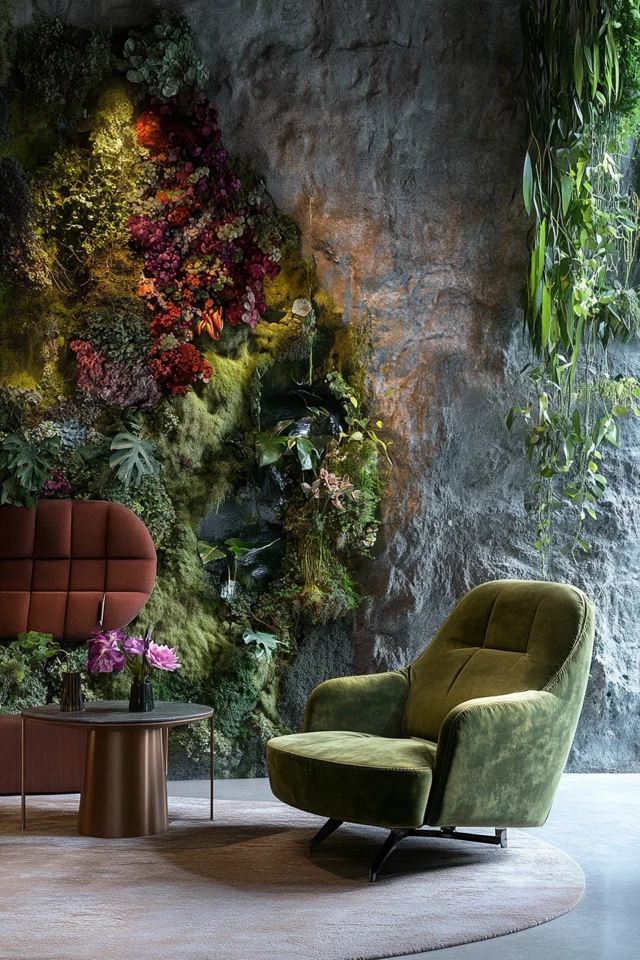
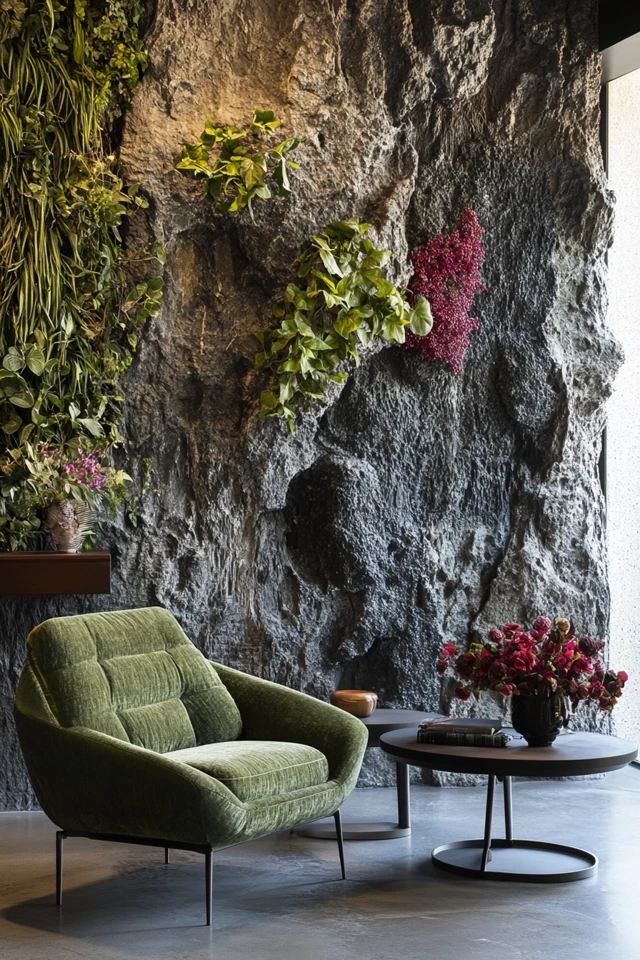
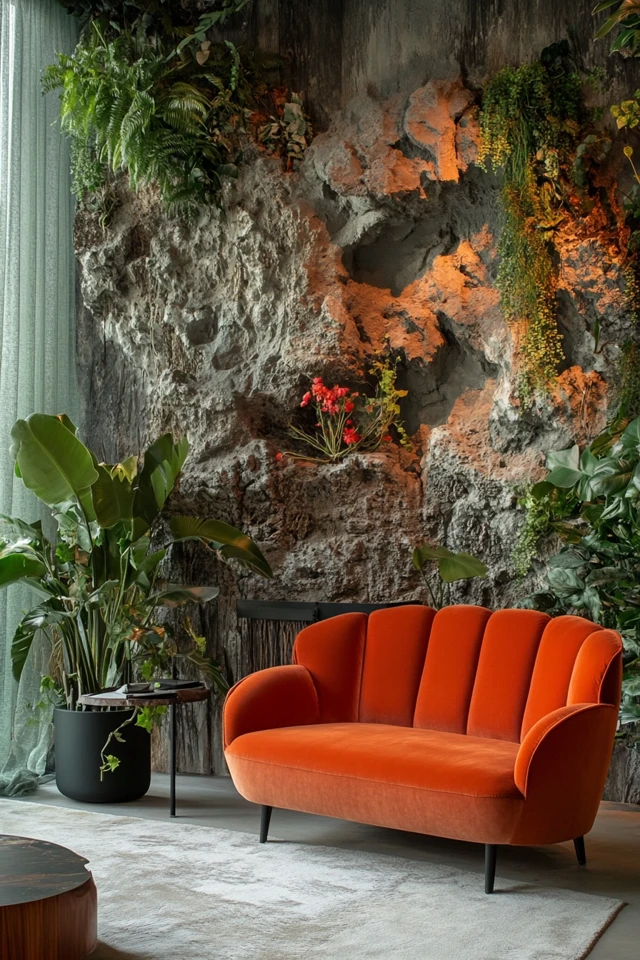
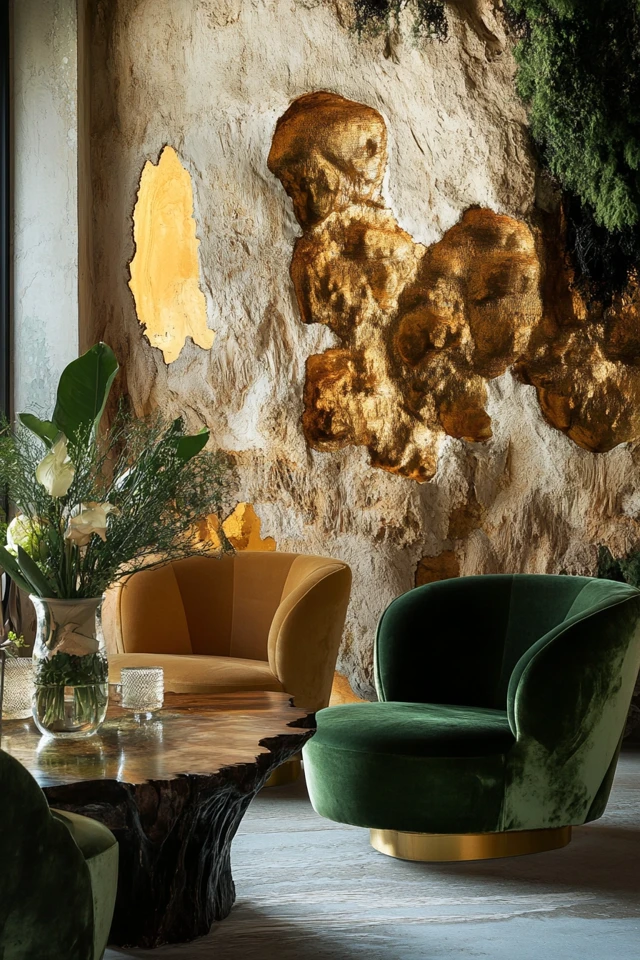
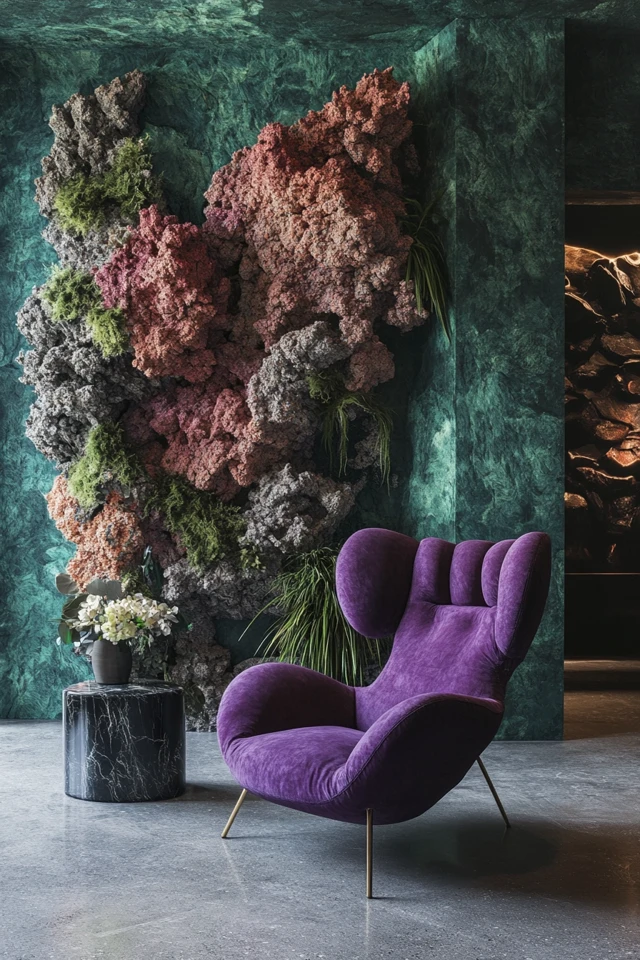
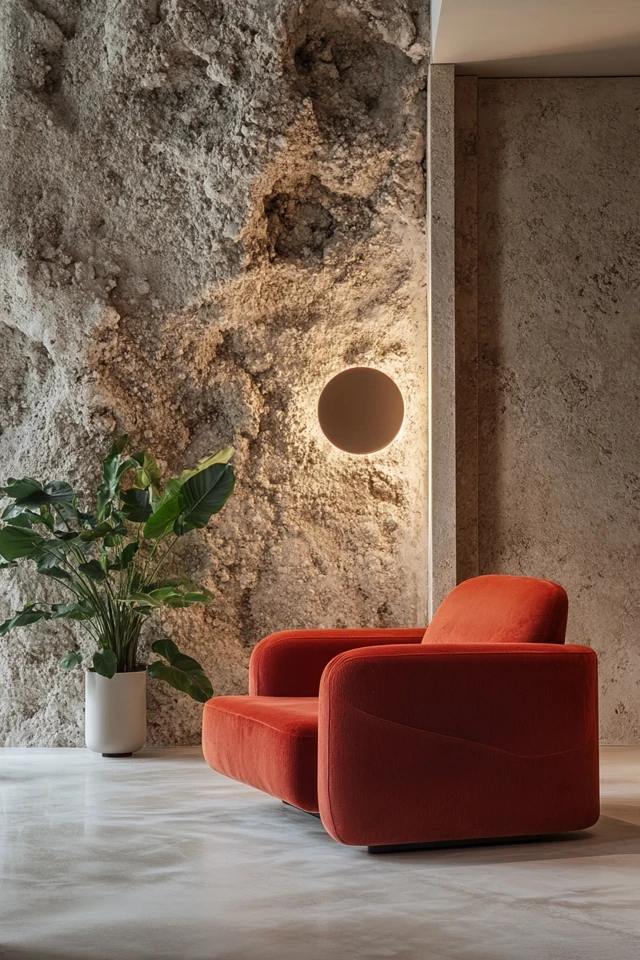
Why These Key Elements Work So Well Together
Using unexpected materials in design creates a sense of contrast and balance, both visually and texturally. Here’s why these elements work together to create a cohesive look:
- Contrast in Texture: Mixing rough and smooth surfaces—like pairing a concrete countertop with soft linen curtains—creates a tactile experience that’s engaging and dynamic.
- Surprise Factor: Unusual materials instantly catch the eye and make your design memorable. Whether it’s a cork accent wall or terrazzo flooring, these choices stand out without overpowering the space.
- Harmony Through Color: Even unexpected materials can feel cohesive if they align with your color palette. For example, a reclaimed wood table with gray undertones complements a minimalist monochrome room.
Evidence-based design highlights how texture and materiality influence our perception of space. Rough textures evoke warmth and intimacy, while sleek, smooth surfaces convey modernity and openness. Using unexpected materials effectively combines these qualities, creating rooms that feel both inviting and stylish.
How to Incorporate Unexpected Materials: Step-by-Step
1. Identify the Area of Impact
- Choose where you want the unexpected material to shine. It could be:
- A statement wall.
- Furniture, like a coffee table or shelving.
- Smaller accents, such as lighting fixtures or decor.
2. Select a Material That Resonates
- Consider options that suit your personal style and the room’s function. Popular choices include:
- Concrete: Perfect for industrial or modern interiors, use it for floors, countertops, or planters.
- Reclaimed Wood: Ideal for rustic or eco-friendly spaces, add it as wall paneling, furniture, or beams.
- Cork: Great for accent walls or flooring, cork adds warmth and soundproofing.
- Metal Sheets: Weathered or polished metal creates striking backsplashes, headboards, or wall art.
- Recycled Glass: Often used for countertops or tiles, it brings a vibrant, eco-friendly touch.
3. Incorporate Balance
- Offset bold materials with softer elements to maintain harmony. For example, balance a concrete floor with plush rugs or pair a metal wall with warm lighting.
4. Play with Texture and Shape
- Use the material in unconventional ways. For instance, create a curved cork wall for a sculptural effect or cut terrazzo tiles into geometric shapes for a unique floor design.
5. Blend with Existing Elements
- Ensure your material choice complements the existing color palette and style of the room. For example, raw wood pairs beautifully with neutral tones, while recycled glass works well in colorful, eclectic spaces.
6. Highlight with Lighting
- Showcase the texture and details of the material with strategic lighting. Uplighting can enhance a textured wall, while pendant lights draw attention to unique surfaces like terrazzo.
7. Start Small if You’re Unsure
- Experiment with smaller pieces before committing to large-scale installations. A concrete side table or a cork bulletin board can be a great starting point.
FAQ
1. Are unexpected materials expensive?
Not always! Many unconventional materials, like reclaimed wood or cork, can be affordable and even DIY-friendly. Higher-end options, like terrazzo or recycled glass, can vary in price depending on customization.
2. How do I ensure the material fits my room’s style?
Pair it with complementary elements in your existing design. For example, add metal accents to a modern room or use reclaimed wood in a rustic setting.
3. Can unexpected materials work in small spaces?
Absolutely! Smaller applications, like a cork wall panel or a concrete coffee table, can add impact without overwhelming the room.
4. Are these materials durable?
Many unconventional materials, like concrete and metal, are incredibly durable. Others, like cork or recycled glass, require proper care to maintain their look and longevity.
5. Where can I find these materials?
Check local hardware stores, specialty suppliers, or online marketplaces. You can also explore thrift shops and salvage yards for unique, reclaimed pieces.
Variations
- Minimalist Approach: Stick to one or two unexpected materials in neutral tones, like a polished concrete floor or a sleek cork wall, to maintain simplicity.
- Eclectic Style: Mix several materials—such as terrazzo, brass, and reclaimed wood—to create a vibrant, layered look.
- Eco-Friendly Design: Opt for sustainable materials like bamboo, recycled glass, or reclaimed wood to reduce environmental impact.
- Industrial Aesthetic: Incorporate raw materials like exposed metal pipes, concrete countertops, and weathered wood for a rugged, urban feel.
How to Showcase It
- Focal Points: Use unexpected materials to create striking focal points, like a recycled glass countertop in the kitchen or a terrazzo fireplace in the living room.
- Seasonal Updates: Highlight materials seasonally—add warm textiles to soften concrete in winter or use fresh greenery to complement reclaimed wood in spring.
- Event Styling: Style unconventional materials for events, such as a metal console table as a buffet setup or cork boards as a unique photo display.
- Everyday Utility: Incorporate functional pieces like a cork pinboard in a home office or a concrete bench in an entryway for practicality and style.
Occasions to Feature It
- Housewarming Events: Impress guests with a statement piece like a terrazzo coffee table or a metal accent wall.
- Dinner Parties: Showcase unique materials on your dining table, like a reclaimed wood centerpiece or terrazzo serving platters.
- Relaxing Evenings: Create a serene environment with tactile materials like cork flooring and linen curtains.
- Creative Spaces: Use bold materials to inspire creativity, like a concrete-topped desk or a colorful recycled glass backsplash in a workspace.
Conclusion
Unexpected materials have the power to redefine your room design, turning everyday spaces into extraordinary showcases of creativity and style. By stepping outside the box and experimenting with materials like reclaimed wood, terrazzo, or concrete, you can create a home that’s uniquely yours.
The key to success is balance—let these materials shine as focal points while blending them seamlessly with the rest of your design. Whether you’re going bold with a concrete feature wall or starting small with a cork accent, these choices will add depth, personality, and sophistication to your space.
So, let your imagination run wild, experiment with textures and finishes, and transform your home with materials that spark joy and conversation. Your dream space is just a few unexpected choices away!

